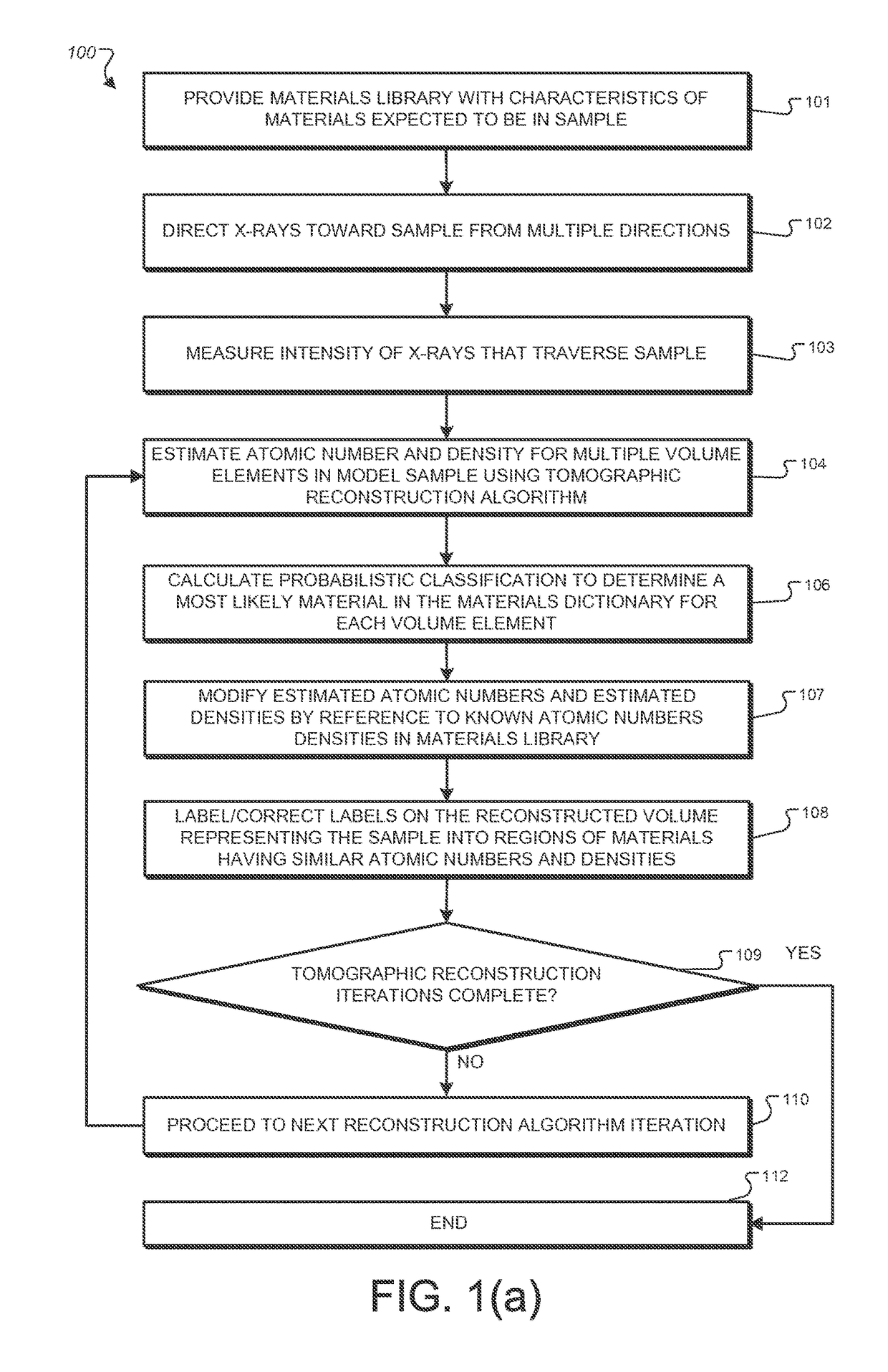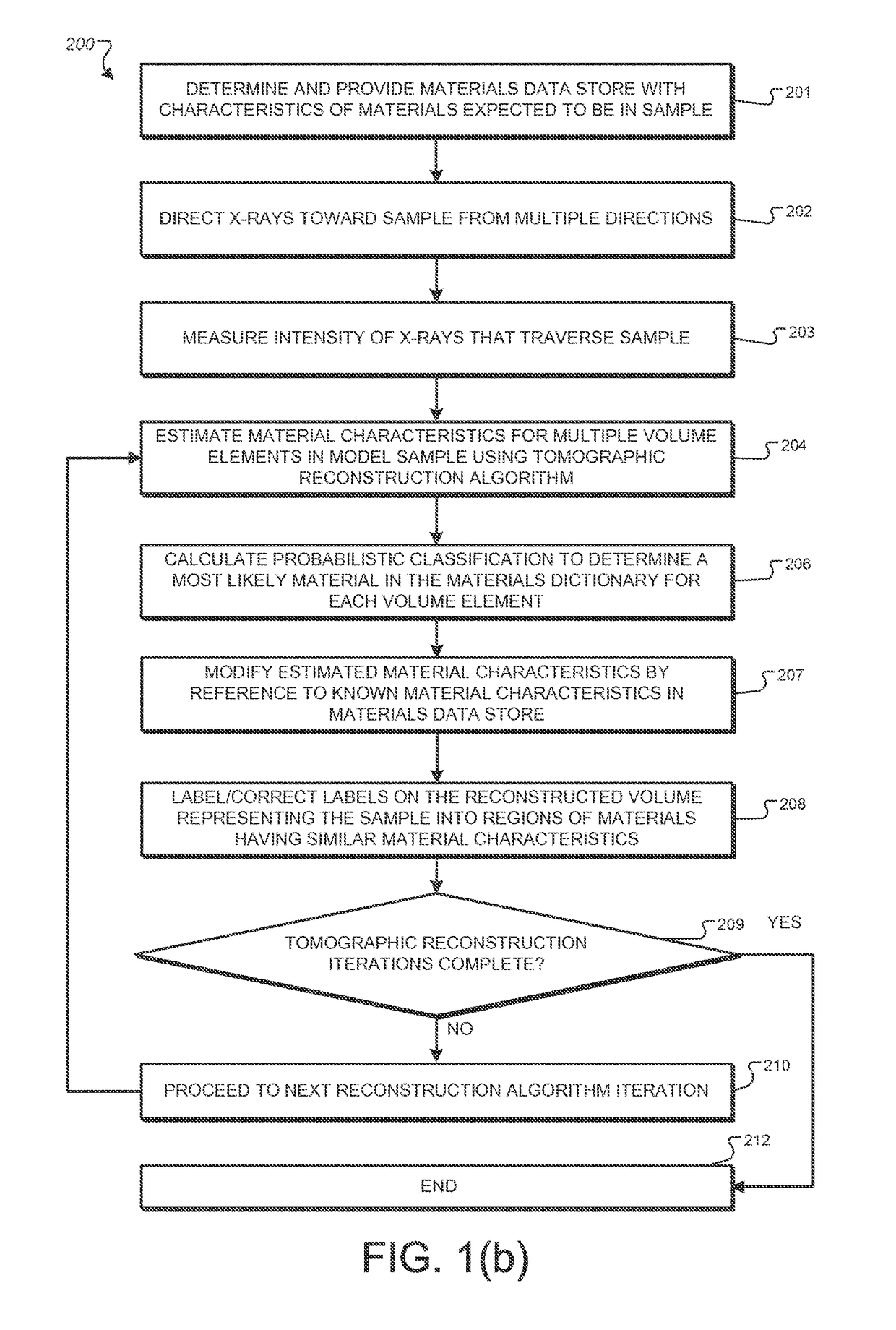Correction of beam hardening artifacts in microtomography for samples imaged in containers
a microtomography and container technology, applied in image enhancement, image analysis, instruments, etc., can solve the problems of insufficient information to perform tomographic reconstruction from polychromatic attenuation data, inability to perform tomographic reconstruction, and inability to solve computationally insoluble problems such as beam hardening
- Summary
- Abstract
- Description
- Claims
- Application Information
AI Technical Summary
Benefits of technology
Problems solved by technology
Method used
Image
Examples
Embodiment Construction
[0041]Provided is a tomographic reconstruction and segmentation process, and system therefore, that produces a segmentation based on physical properties of materials using input from a materials library. In a preferred version, both reconstruction and segmentation update Z (atomic number) and rho (density) for volume elements at multiple iterations of the reconstruction algorithm. The preferred segmentation process uses a best-matching approach to known materials in the materials library, providing an updated label for a voxel, and not a clustering based on voxel values and local intensity variations in the tomogram. “Labeling” in some embodiments corresponds somewhat to a segmentation; however, this segmentation is not based on the data only (where voxels or regions are separated from the others by the relative intensity difference observed locally between them) but by “voxel” matching (so that each voxel can be processed independently), using additional known data of the material ...
PUM
 Login to View More
Login to View More Abstract
Description
Claims
Application Information
 Login to View More
Login to View More - R&D
- Intellectual Property
- Life Sciences
- Materials
- Tech Scout
- Unparalleled Data Quality
- Higher Quality Content
- 60% Fewer Hallucinations
Browse by: Latest US Patents, China's latest patents, Technical Efficacy Thesaurus, Application Domain, Technology Topic, Popular Technical Reports.
© 2025 PatSnap. All rights reserved.Legal|Privacy policy|Modern Slavery Act Transparency Statement|Sitemap|About US| Contact US: help@patsnap.com



